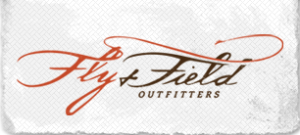
Report Date:
http://www.flyandfield.com/index.htm
Unsurprisingly, we have mixed reports from our lovely little spring creek. As the newest batch of fish have become residents, they’ve also gotten a bit more accustomed to their particular environment. This can make them both especially keyed into the hatch (or lack thereof) and also trickier to fool when they are eating. The good news is that it would appear the fish from last year have mostly stuck around, spread out and made “homes” for themselves. This is the first step towards us having a proper fishery up there again.
We’ve heard of fish being caught the entire stretch of the river. The Hatchery, while rightfully considered the fishiest area, is closed now to all access. This will be in effect until the Gov. changes tactics. There are so many other, more challenging -therefor rewarding- areas to fish out there. Both above and below “The Tubes” fish can be found. The Campground, while closed to camping, is a good area to explore. Most of us prefer to get off the beaten track a little to find some solitude, while maybe fewer fish…
Anytime from 9am to 6pm up there you have a chance of finding feeding fish. If the mayfly hatch does come off, that is typically an afternoon event nowadays. But midges can be on the move just about any time after a little UV gets on the water.
As for what you’ll need, always have spools of light tippet, both nylon and fluorocarbon for the vast majority of your fishing. 5, 6 and even occasionally 7X is required to fool fish out there. Nylon can be used for all your dry fly offerings, but fluoro is an absolute must for sub-surface presentations. I’ve found that 6X is the most widely used tippet when it comes to the small bugs we’re using the majority of the time.
On recent outings, even when the hatch is skinny or non-existent, putting a red or black Two-Bit Hooker (#20) under a dry fly is still a top producer. Zebra Midges, sparsely tied Euro nymphs and drowned Griffith’s Gnats will also work as droppers. We do discourage the use of bobbers on the Fall whenever possible; they are “loud” and don’t cast with near the elegance of a dry fly.
When fish are rising, they are typically on one of two predominant flies, with one significant exception. The main flies throughout the winter and early spring are midges and the Blue-Winged Olive mayfly. Detecting which of these two bugs the fish are rising to is pretty simple:
MIDGES: If the trout moves towards the surface, swirls on its food and heads back towards the bottom without breaking the surface or leaving a distinct bubble in its rise form, there’s a really good chance it ate a midge. Usually what you’ll see is the circular rise form expand, but no actual surface commotion. Midges get stuck on their way to hatch, or suspend just under the surface, where they sometimes will join into clusters. The fish can see them easily, they are vulnerable and plentiful. The above-mentioned Palamino, Griffith’s as well as Winker’s Midge all work in these situations. Often times I’ll even moisten one of these flies with saliva before using it so it will sink just a little.
BWO MAYFLY: The rise to a mayfly is typically way more aggressive. You’ll see the trout make a darting move towards the surface, eat as it turns, and leave a much more dramatic, splashy rise form. Many times, you can actually watch the bug on the river’s surface disappear as the fish eats. My favorite flies on the Fall for the BWO hatch are Hackle Stackers, Brewers Butthead, Parachute BWO and Extended Body BWO (all in #20). The Parachute is the best if you want to drop something off the back of it.
The one other fly to look for up there this time of year is the little Winter Stone. It only hatches up high in the river and never in big numbers. When they’re around, the fish really key in on them as it’s a relatively big bite of food. Our A/C Caddis #16 works well, so will a little, dark-bodied Chubby or small Skwala.
Report Date:
We’ve got nothing but good reports coming in from the Crooked. While throughout the day fish can be caught with......